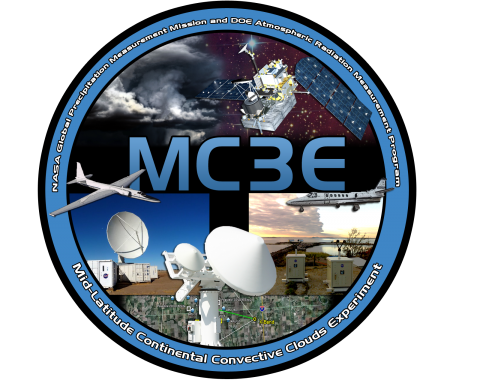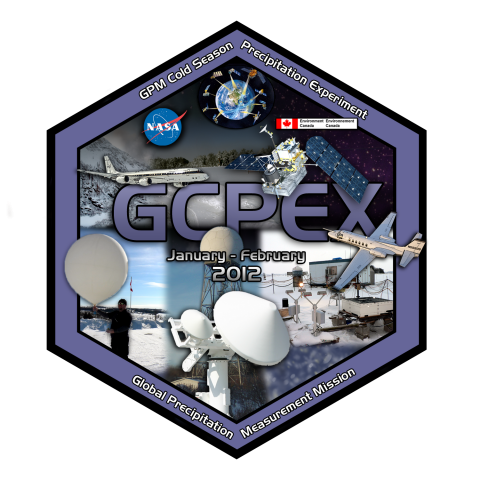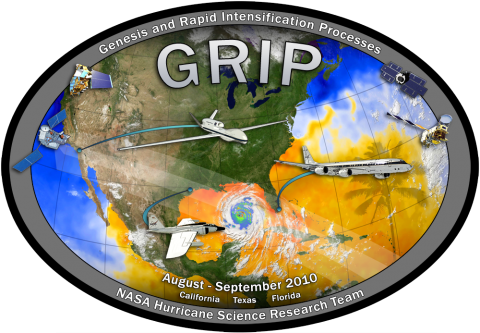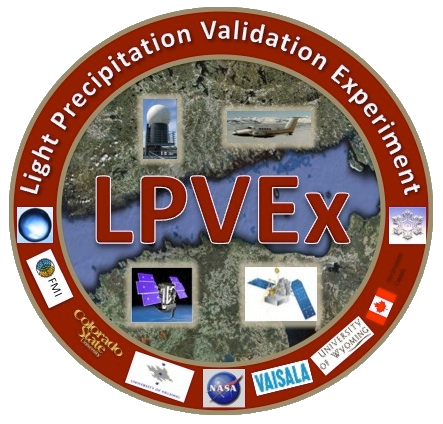 The Midlatitude Continental Convective Clouds Experiment (MC3E) took place in central Oklahoma April–May 2011. The experiment was a collaborative effort between the U.S. Department of Energy (DOE) Atmospheric Radiation Measurement (ARM) Climate Research Facility and the National Aeronautics and Space Administration’s (NASA) Global Precipitation Measurement (GPM) mission Ground Validation (GV) program.
The Midlatitude Continental Convective Clouds Experiment (MC3E) took place in central Oklahoma April–May 2011. The experiment was a collaborative effort between the U.S. Department of Energy (DOE) Atmospheric Radiation Measurement (ARM) Climate Research Facility and the National Aeronautics and Space Administration’s (NASA) Global Precipitation Measurement (GPM) mission Ground Validation (GV) program.
The field campaign leveraged the unprecedented observing infrastructure currently available in the central United States, combined with an extensive sounding array, remote sensing and in situ aircraft observations, NASA GPM ground validation remote sensors, and new ARM instrumentation purchased with American Recovery and Reinvestment Act funding. The overarching goal was to provide the most complete characterization of convective cloud systems, precipitation, and the environment that has ever been obtained, providing constraints for model cumulus parameterization's and space-based rainfall retrieval algorithms over land that have never before been available.
The GHRC is the archive and distribution center for ground validation data collected during the MC3E Experiment.
More information on the MC3E Experiment can be found at https://ghrc.nsstc.nasa.gov/home/field-campaigns/mc3e.
 GHRC has started publishing data from the the GPM Cold-season Precipitation Experiment (GCPEx). The GPM Ground Validation DC-8 Navigation and Housekeeping Data GCPEX dataset is composed of two types of files. National Suborbital Education and Research Center (NSERC) of the University of North Dakota (UND) provided the geo-located housekeeping data containing the altitude, pressure, air speed, wind speed and other attributes. The NASA DC-8 Navigation data in comma delimited IWG1 format were collected and utilized in-flight during the GCPEx mission and retrieved from the Real-Time Mission Monitor.
GHRC has started publishing data from the the GPM Cold-season Precipitation Experiment (GCPEx). The GPM Ground Validation DC-8 Navigation and Housekeeping Data GCPEX dataset is composed of two types of files. National Suborbital Education and Research Center (NSERC) of the University of North Dakota (UND) provided the geo-located housekeeping data containing the altitude, pressure, air speed, wind speed and other attributes. The NASA DC-8 Navigation data in comma delimited IWG1 format were collected and utilized in-flight during the GCPEx mission and retrieved from the Real-Time Mission Monitor.

 The Midlatitude Continental Convective Clouds Experiment (MC3E) took place in central Oklahoma April–May 2011. The experiment was a collaborative effort between the U.S. Department of Energy (DOE) Atmospheric Radiation Measurement (ARM) Climate Research Facility and the National Aeronautics and Space Administration’s (NASA) Global Precipitation Measurement (GPM) mission Ground Validation (GV) program.
The Midlatitude Continental Convective Clouds Experiment (MC3E) took place in central Oklahoma April–May 2011. The experiment was a collaborative effort between the U.S. Department of Energy (DOE) Atmospheric Radiation Measurement (ARM) Climate Research Facility and the National Aeronautics and Space Administration’s (NASA) Global Precipitation Measurement (GPM) mission Ground Validation (GV) program. The Genesis and Rapid Intensification Processes (GRIP) experiment was a NASA Earth science field experiment conducted August 5 to September 30, 2010. The major goal was to better understand how tropical storms form and develop into major hurricanes. NASA used the DC-8 aircraft, the WB-57 aircraft and the Global Hawk Unmanned Airborne System (UAS), configured with a suite of in situ and remote sensing instruments that were used to observe and characterize the lifecycle of hurricanes. This campaign also capitalized on a number of ground networks and space-based assets, in addition to the instruments deployed on aircraft from Ft. Lauderdale, Florida (DC-8), Houston, Texas (WB-57), and NASA Dryden Flight Research Center, California (Global Hawk).
The Genesis and Rapid Intensification Processes (GRIP) experiment was a NASA Earth science field experiment conducted August 5 to September 30, 2010. The major goal was to better understand how tropical storms form and develop into major hurricanes. NASA used the DC-8 aircraft, the WB-57 aircraft and the Global Hawk Unmanned Airborne System (UAS), configured with a suite of in situ and remote sensing instruments that were used to observe and characterize the lifecycle of hurricanes. This campaign also capitalized on a number of ground networks and space-based assets, in addition to the instruments deployed on aircraft from Ft. Lauderdale, Florida (DC-8), Houston, Texas (WB-57), and NASA Dryden Flight Research Center, California (Global Hawk). The near real-time LANCE AMSR-E system at the AMSR-E SIPS and GHRC DAAC is pleased to announce that we have integrated a new Version 11 L2A near real-time algorithm from Remote Sensing Systems (RSS) into our processing systems. These much improved version 11 brightness temperatures, as well as the corresponding L2B and L3 daily derived products, are available in the operational areas on our lance servers.
The near real-time LANCE AMSR-E system at the AMSR-E SIPS and GHRC DAAC is pleased to announce that we have integrated a new Version 11 L2A near real-time algorithm from Remote Sensing Systems (RSS) into our processing systems. These much improved version 11 brightness temperatures, as well as the corresponding L2B and L3 daily derived products, are available in the operational areas on our lance servers. The Light Precipitation Evaluation Experiment (LPVEx) took place in the Gulf of Finland during September and October, 2010. Microphysical properties, associated remote sensing observations, and coordinated model simulations of high latitude precipitation systems to drive the evaluation and development of precipitation algorithms for current and future satellite platforms were collected. LPVEx consisted of coordinated aircraft flights within an extensive network of ground-based observations that included three dual-polarization, C-band, Doppler radars, a network of surface weather and sounding stations, several micro-rain radars, and surface rainfall and drop size distribution (DSD) measurements from a large number of rain gauges and disdrometers. LPVEx was a collaborative effort between CloudSat, the GPM Ground Validation (GV) program, the Finnish Meteorological Institute (FMI), Environment Canada (EC), the United Kingdom National Environmental Research Council, Vaisala Inc., and the University of Helsinki (UH).
The Light Precipitation Evaluation Experiment (LPVEx) took place in the Gulf of Finland during September and October, 2010. Microphysical properties, associated remote sensing observations, and coordinated model simulations of high latitude precipitation systems to drive the evaluation and development of precipitation algorithms for current and future satellite platforms were collected. LPVEx consisted of coordinated aircraft flights within an extensive network of ground-based observations that included three dual-polarization, C-band, Doppler radars, a network of surface weather and sounding stations, several micro-rain radars, and surface rainfall and drop size distribution (DSD) measurements from a large number of rain gauges and disdrometers. LPVEx was a collaborative effort between CloudSat, the GPM Ground Validation (GV) program, the Finnish Meteorological Institute (FMI), Environment Canada (EC), the United Kingdom National Environmental Research Council, Vaisala Inc., and the University of Helsinki (UH).



